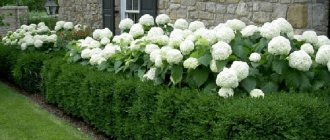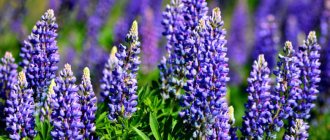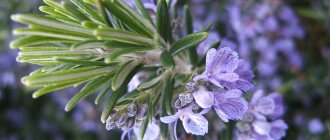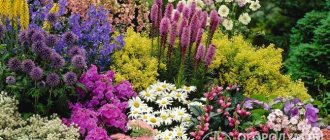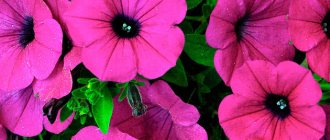Let me clarify right away: we are talking about continuous flowering (and not about long or repeated flowering). That is, when the first bud blooms in May or June, and the last one is destroyed by autumn frost. There are many such flowers, but I will only tell you about those that I grew personally. Why only about them? I'll explain now. Continuous flowering is a strong argument in favor of this or that plant, you will agree. But sellers of planting material often lie, endowing various species with non-existent advantages. When I was looking for flowers that would decorate my flowerbed from summer to late autumn, I was persistently offered either long-blooming or repeat-blooming ones. I couldn’t be fooled, but someone will buy it and sow it - and hope for continuous flowering... in vain. And I decided to make my contribution to restoring the truth: to talk about flowers that will actually delight you with bright colors all summer and autumn. Checked!
Gazania
If you want a beautiful flowerbed, but cannot devote much time to care, Gazania is your plant. I prefer to buy already flowering seedlings: it is not yet known what will grow from the seeds, but here everything is already clear both with the color and with the structure (single or double) of the flower.
Even with minimal care, gazania blooms continuously. It is amazingly unpretentious and tenacious! It grew wonderfully and bloomed continuously on poor soil without a single fertilizing, only with watering. Prefers sun, but can be placed in partial shade. I plant seedlings in open ground at the beginning of May or even the end of April (gazania tolerates short frosts down to -5... -7°C without problems), and until October-November my flower beds are decorated with bright “daisies”. By the way, the leaves are also beautiful - bright green, narrow, they remain decorative all summer (only a few die off!). No pests were noticed, and diseases also avoided the gazania. It withstands heat and lack of moisture, and continues to bloom! True, not as abundantly as in favorable conditions, but still... Regular watering and fertilizing responds with a whole cap of flowers - no leaves are visible! Gazanias are perennial plants, although they are usually grown as annuals. But if you wish, you can save the copy you like. I tried it and it worked.
Perennial flowers for the garden
When thinking about what flowers to plant in the garden, consider this option. According to their growth, these flowers are divided into three main categories: low-growing, medium-growing and tall. Let's briefly look at each of them.
short
Unpretentious perennial flowers for the garden include several popular species. These are, first of all, large-flowered flax, oak sage, cinquefoil, soft mantle, gypsophila paniculata, geranium, gentian, dwarf phlox and some others. They do not require strict daily care and can be safely recommended for planting in a summer cottage. They can be used when arranging flower beds or mixborders.
Medium height
If we talk about the growth of such plants, then it is, as a rule, 0.3-0.8 meters. They are quite universal, and such a significant difference in size makes them suitable for almost all types of flower beds.
Noting the names of medium-sized flowers for the garden, I would like to highlight the following types:
- Day-lily.
- Rhodiola rosea.
- Yarrow.
- Astilbe.
- Monarda double.
- Cornflower.
- Paniculate Phlox.
- Peony (choose later varieties).
Tall
This group of perennial flowers for the garden includes several of the most popular names. Their height starts from 80 centimeters, which, on the one hand, somewhat limits the possibilities of their planting, and on the other hand, on the contrary, makes them more unique compared to their lower counterparts. Popular types:
- Tricyrtis purple beauty.
- Stock rose.
- Helenium hybrid.
- Vasilisnik.
- Veronica longifolia.
- Willow sunflower.
Remember! Such plants can be used for flower beds, as well as for flower beds.
The use of perennials in a summer cottage is justified for many reasons. One of them is that setting up a beautiful, well-formed flower garden, especially a mixed border, can take a lot of time. Often we are talking about several years. Therefore, perennial plants will come in handy precisely for such cases.
Marigold
I believe that marigolds (Tagetes) need no introduction. They are grown as annuals, although there are also perennial species. They are definitely worth placing on the site - if not for beauty, then for the sake of unique useful properties.
Marigolds are amazingly beautiful and incredibly useful for the garden. It is advisable to plant them in a sunny place, partial shade is acceptable. They hardly bloomed in the shade, although they grew more greenery than in the sun. Don’t rush into planting in open ground; wait until the return frosts have passed. Somehow my seedlings were not even exposed to minus temperatures, but to a simple drop in temperature (+2…+5°C). The marigolds were so afraid of the cold snap that they froze in growth forever. They didn’t die, but for a month they still didn’t come to their senses. I had to send them to the compost and remember firmly: marigolds should be planted only after the onset of stable heat! As soon as the flowers begin to fade, I immediately remove them, so the appearance is neater, and the plant does not need to waste energy setting seeds. When there is no rain for a long time, I water it; once or twice a season I can (but not necessarily) feed it with complex mineral fertilizer. No diseases were ever noticed; pests were affected only once: during a dry, hot summer, a spider mite came to visit.
Common Perennials
The most popular among all types of perennial flowers in the country are peonies and dahlias. There are various ideas on how to decorate your garden with these noble plants.
By the way! Any specialized online store offers a huge selection of any flower seeds.
Reproduction of the mentioned perennial peonies is carried out using tubers. The flowering period begins in July. The color range, on the one hand, is not very wide, but on the other, it is simply chic, since it includes such rich colors as pink, burgundy and white. Outside the flowering period, the bush itself can also perform decorative functions.
As for dahlias, they bloom later, starting in late August and early September. Common colors: yellow, purple, red and white.
Clematis are also an excellent choice. They can additionally decorate a fence, arch or garden gazebo. Their small flowers will decorate any cottage. They bloom from June to October.
What you need to know about bulbous flowers
Almost all bulbous flowers are perennials. One of them is crocus. Already in March it begins to appear from under the melting snow. As a rule, flowering begins simultaneously with the appearance of the first leaves. On the other hand, it cannot be said that crocus has a long flowering period.
Remember! Most bulbous perennials have a short flowering period.
An absolute hit among flowers propagated using bulbs are tulips. When compared with crocuses, it should be noted that tulips are a little more picky about the conditions of care. But with their wide range of colors they can fascinate literally everyone.
In addition to unpretentious crocuses, as well as slightly more capricious, but beautiful tulips, you need to remember about other perennial bulbous flowers, which have long become a kind of “classic” in dachas. We are talking, first of all, about hyacinths, lilies and daffodils. Moreover, in addition to the fact that they are all a real decoration for any country flower garden, all such flowers have a wonderful aroma.
Catharanthus pink
I fell in love with it at first sight, not even knowing that it blooms all summer. A compact bush, beautiful shiny leaves, cute little delicate flowers - you can admire Catharanthus roseus endlessly!
Catharanthus is an ideal plant for hanging flowerpots. Amazingly tenacious! It is demanding in terms of soil moisture, but can withstand short periods of drought (the results of a forced strength test - 9 days at a daytime temperature of +32°C without a single watering!) without loss of decorativeness. One of the few species that in my climatic conditions (in the Krasnodar Territory) can be grown in hanging pots. It blooms well without fertilizing, but I fertilize it with a microdose of mineral complexes with each watering, so there are more flowers and the color of the petals is brighter. I didn’t have any illnesses, and there were no pests either. No pruning is needed: the shoots at the base are not exposed, the bush does not fall apart, it always remains a compact “umbrella”, even, as if it had been shaped. Another remarkable quality of catharanthus is that the flowers are self-cleaning (that is, they do not need to be removed; the wilted ones fall off on their own). Pink catharanthus is an evergreen perennial subshrub, but even in the Krasnodar region it does not overwinter, so it is grown as an annual. It reproduces well by self-sowing, but seedlings must be protected from return frosts. When planting seedlings, place the plants at a distance of about 30-35 cm from each other. The first time, trying to plant tightly, I left about 10 cm between the catharanthus. Definitely not enough, because after two weeks it became obvious: such close proximity is clearly not good for the plants.
Interesting ideas
classic round flowerbed in the country
When laying out a garden or flower bed, the choice of the flowers themselves for the garden is not so important as their combinations. Plants that are completely different and individually extremely unassuming can make an excellent composition. Thanks to a careful selection of combinations, a summer cottage can be made infinitely unique and varied. Here are some interesting decorating ideas.
"Unpretentious" flower bed
For people who spend a small amount of time at the dacha, flower arrangements that do not require special care are suitable. You can create an impromptu “unpretentious flowerbed” and think about it once every few months.
flowerbed with bright splashes of yellow and red flowers
For greater effect, it can be made multi-tiered. At the highest level there will be a large cactus surrounded by daisies. Plant the next level with tall calendulas. So that they stand level with calendulas. And on the lowest tier there are hostas, which will have their leaves turned away from the flowerbed. Such a motley crowd of flowers will create an overall pleasant impression and will not require special care.
Flower in a galosh
wavy flower bed with daisies and salvias
A rather unusual and bright solution would be to place one galosh with a flower near the entrance to the house. Any suitable plant can be planted there. The flower will not live very long like this, but it will amuse the owners and guests of the house.
Hanging flower bed made of wood
Highly hung vases with flowers make the veranda feel homey
Who said there is no place for flowers on earth? They will be comfortable in the air too. To build such a structure, you will need a durable plywood board that will serve as a base. Place a sheet of chipboard around the perimeter to hold back the soil. And you can hide it by installing it on top of a miniature fence made of boards. For those who are especially skilled, you can make a cage instead of a fence.
Flowerbed made from scrap materials
original solution: flowerbed made from an old iron bed
It is not necessary to make a flowerbed of a standard shape and from ordinary materials. After all, you can use any element that is at hand. For example, if you have an extra set of tires, you can build a structure from them. Place the first three pieces close to each other, pouring sand into them. And put the last one in the middle of the structure. Place fertile soil there and plant lush roses. Quite an unusual combination of simplicity and elegance. The contrast between the red color of the flowers and the black color of the tires will especially stand out.
Exotic canopy
exotic dichondra canopy
You can decorate the roof of the bathhouse in the area above the front door with the help of exotic dichondra and ampelopsis flowers. It will look as if there is a sheet of snow hanging from the roof with colorful grapes growing on it. This decoration requires special care due to the general whimsical nature of the flowers and is appropriate only in the summer.
Triangular flowerbed
triangular flower bed made from improvised materials
Instead of a standard round flowerbed, you can make a triangular one. Then either fill it symmetrically with different flowers, or divide it into four smaller triangles and fill each of them with a unique combination of plants.
Inscription with flowers
Flowers can be arranged in a certain order to form an inscription or symbol. For example, the color will be set by densely planted dahlias, and the volume will be created with the help of smaller cornflowers.
flowerbeds made from inscriptions with flowers always look original.
Recommendation from a famous florist :
A ring-shaped garden with a small green shrub in the center and ever-increasing rows of flowers of the same size, but different, perhaps even contrasting in shade, will look very impressive.
Only a few combinations are presented above, but in fact their number exceeds all reasonable values. A particularly sophisticated gardener can create a garden with a message in the language of flowers, or come up with something completely different.
Any combination has the right to life and, if presented properly, will look extremely interesting and unusual. Creativity is important here.
Levkoy gray-haired
It ended up in my flowerbed by accident because I don't like its scent. But my sister brought it - what to do with it, she planted it. And I didn’t regret it! Bright “candles” of gray-haired gillyflower (Matthiola incana) decorated the flowerbed until late autumn. It’s just a pity that there was only one seedling: in a group, I think, the left-wings would have looked much more impressive!
A flowerbed with gillyflowers is not only beautiful, but also fragrant. Despite the prevailing opinion that this plant is capricious, gillyflowers haven’t given me any trouble. Watering, fertilizing once a week, pruning faded inflorescences is a standard set of care tasks. No diseases or pests were observed. The only negative (possibly due to climatic conditions) is that the leaves at the base constantly dried out, as a result of which by autumn my pet became “bare-footed”. But I forgave him for this shortcoming, because he blossomed like crazy! The first night frosts (down to –5°C) did not harm it, and only a more serious cold snap killed the stubborn gray-haired beauty, still blooming. It is grown as an annual, although there are also perennial species.
Rules for caring for country flowers
Despite the fact that most garden flowers do not require the same amount of care as more finicky garden plants, their cultivation requires following certain rules. In addition, it is advisable to pay attention to reviews and advice from experienced gardeners.
Most gardens or summer cottages grow flowers that bloom twice a season. So, such plants need to be pruned after the first flowering. You need to trim the stem at a height of 0.1 meters, if we are talking about lupine, Lychnis chalcedony, larkspur, catcat, leopard, terry cornflower, sage, balsam tansy. The only exception is the small petal. This plant is pruned by 1/3 and then fertilized.
An interesting feature is possessed by those plants whose flowers and leaves can reach large sizes and, accordingly, have considerable weight. Such plants need to be supported with supports. As a rule, a rod made of metal, wood, or even bamboo from an old fishing rod can act as a support. To create additional support, the flower stem is tied to a rod. To do this you will need a piece of ordinary rope.
Bushy plants that like to grow wide also need special structures that could act as additional support. To do this you can:
- Put together a frame from small-section wooden boards.
- Drive in several small posts and tie them with strong cords.
- Use special supports that can be purchased at the appropriate supply store for summer residents and gardeners.
It is necessary to pay special attention to solving such a problem as pruning old, dry or wilted leaves and other parts of the flower. If the plant has already faded, it must be trimmed or completely removed when weeding the flower garden. Not only does this make the flowerbed ugly, but it also takes away, to one degree or another, the strength and energy of the plant, which could be used for its restoration or subsequent flowering.
When thinking about care, we often would like to know which flowers are the most unpretentious in the conditions of a summer house and suburban area. So, among the many flowers for the garden, we can highlight the following:
- Annuals. Sylvia, calendula, petunia.
- Perennials that love shade: tulips, ferns, snowdrops, clematis, lilies of the valley, kirkazon, tenacious.
- Perennials that prefer sun: bellflower, mallow, lupine, lily, carnation, peony.
As we have already noted, a very important condition for maintaining and planting certain country flowers is their unpretentiousness. It is this circumstance that should be taken into account before choosing which flowers to plant at the dacha, since landscaping a dacha plot is not so simple, and one would not want all the work to be wasted.
It so happens that in some publications, especially in specialized magazines, from time to time hidden advertising of one or another new-fangled variety may appear. This is done in order to increase the sale of flower seeds of certain varieties. Perhaps they look attractive. However, given the difficult conditions, as well as the lack of opportunity to regularly care for flowers in the country, buying such seeds or ready-made seedlings is not always justified.
Mirabilis jalapa
A heat-loving perennial that dies from the first frost. Perhaps due to the impressive size of an adult plant (1-1.2 m in height and the same in width), mirabilis (Mirabilis jalapa) can not often be seen in country flower beds.
Mirabilis grows and blooms in a big way, but if you manage to find a place for it, you won’t regret it! Small bright gramophones will bloom tirelessly until late autumn. Polete - good, no - mirabilis will not be offended: it knows how to store enough moisture in its tuberous roots. With regard to fertilization, it is worth adhering to the principle “it is better to underfeed than to overfeed.” In my opinion, mirabilis is undeservedly deprived of the attention of gardeners, because its advantages are countless: it reproduces by self-sowing, grows without care (unless the weeds are pulled out around it), diseases and pests do not bother it, and no pruning is needed. During flowering it is stunningly beautiful - plus in the evening and at night it is surrounded by a flair of a subtle, unobtrusive aroma. Well, tell me, isn’t this an ideal candidate for a place in the flower garden?
Helenium
The herbaceous perennial looks great in a flowerbed as a backdrop for species growing in the foreground. The straight stem ends in reddish-yellow flowers with a rich yellow or red border on the petals; when alive, they are suitable for making bouquets, and in the form of dried flowers - for creating floral compositions. Helenium is a shade-tolerant species, can withstand frosts down to -2-3°C, but requires fertile, drained soil.
Nemophila
Let's go from large to small: nemophila (Nemophila) rarely grows above 30 cm. A charming annual with creeping shoots, a huge plus is that it is not aggressive.
Nemophila loves water very much! Nemophila is a delicate creature and will need to be watered constantly. Since the flowering is very abundant, even on fertile black soil I constantly feed it, adding a little fertilizer to the water for irrigation. There are few pests of nemophila: perhaps slugs are not averse to feasting on young leaves. If you have similar living creatures, be prepared to repel, or even better, prevent attempts to gnaw on delicate plants.
Phlox subulate
Phlox blooms twice per season: from May to July and from August to late autumn.
The flowers of this miniature perennial come in a variety of shades: from snow-white to fiery. The stems remain green until snow falls.
Prefers sunny places and sandy soil, although it can grow on any soil. It has a weak root system, so planting it next to crops with strong roots is undesirable.
Withstands heat and coolness with ease. Not afraid of sudden temperature changes. Resistant to frost.
After 5 years, an update is required, otherwise the bushes will become lifeless.
Petunia
Experienced gardeners are familiar with petunia (Petunia) firsthand, but for beginners who have decided to place it in their flower garden for the first time, I strongly recommend that they first acquire theoretical knowledge and only then move on to practice. Start with a brief explanatory dictionary of terms, then look at the list of care work, be sure to take note of the rules for feeding petunias and look at the most effective planting methods. Want to know more? Then go to the Petunia section - it contains so many useful publications from experts and practical advice from experienced summer residents that you will probably find an answer to any question.
Petunia is one of gardeners' favorite plants. Everyone loves these magically beautiful annuals, but I had to master their pruning: in dry, hot summer conditions, the stems quickly become bare at the base. I practice a gentle method - I cut off about a third of the shoots. After 7-10 days - another third, by this time the leaves on the first batch are already growing. The final third of the shoots bloom until buds appear on the first. Thus, the petunia experiences less stress, the bush does not remain bare, and the flowerbed is decorative all the time.
Hydrangea
A perennial garden shrub with bouquet flowers begins to bloom in mid-summer and ends at the end of October. Moreover, not only the flowers, but also the leaves of the plant are decorative. Many varieties have been created, differing in color and shape of the petals, and the dimensions of the bush. Hydrangea needs an abundant supply of moisture and nutrients; the shoots must be insulated for the winter.
Purslane grandiflora
This charming low annual is ideal for rockeries, it makes great borders, and it will also be unusually good just in a clearing! If you don’t have the opportunity to regularly water your plantings, large-flowered purslane (Portulaca grandiflora) is an ideal contender for garden beds!
Purslane tolerates drought more easily than waterlogging. It prefers the sun, but blooms well in partial shade. Feels great in a limited volume of soil (in this case, regular watering and periodic fertilizing are required). Propagates well by self-sowing and cuttings. Resistant to diseases and pests. During periods of drought, it can shed its leaves, making it unsightly. Then there is only one way out - pruning. But don't worry, it grows back quickly!
Godetia
The picky plant pleases the eye with bell-shaped flowers from July until the arrival of frost. The varietal diversity is extremely wide, there are flowers with regular and double petals, and the colors can be very different. Godetia is resistant to unfavorable climatic factors, quickly adapts to a sudden drop in temperature, and can withstand frosts down to -3-4°C.
Scaevola is pleasant
I accidentally bought an already flowering plant, without even knowing its name, and have never regretted it! Scaevola aemula is an incredibly beautiful annual!
Amazing flowering of scevola I spent a long time admiring the unusual flowers, afraid I wouldn’t have time to look at them enough. But more and more new buds blossomed, and new ones immediately appeared to replace the cut off withered flower stalks! She decorated the flowerbed until late autumn, and perhaps would have overwintered under cover... But I, fearing that the scevola would freeze, decided to transplant it into a pot and bring it into the house. To my deep chagrin, the blue-eyed beauty did not survive the transplant.
Growing flowers in flowerpots
Some examples of flowers with names and photos are presented here (click to enlarge):
Flowers placed in flowerpots are not always a substitute for more traditional flower beds. Hanging pots or flowerpots can perfectly complement flower beds that are more familiar to us. They can become a particularly interesting option in cases where there is not much free space on a summer cottage for arranging flower beds. Flowerpots of various shapes are, among other things, a very practical solution. In addition, to change the overall composition you will only need to replace one or two pots or swap them around. What flowers can be planted in flowerpots at the dacha?
The first thing that comes to mind is geranium. In addition, lush pelargonium is a rather unpretentious flower. Also worthy of attention are double and semi-double asters, which, by the way, love plenty of sun.
Often those flowers that seem to be more common in flower beds can be grown in flowerpots. Examples include dahlias or pansies, as well as some varieties of violets and asters. They can be used to decorate a place next to a bench, next to a porch, near a terrace. For greater convenience, it is sometimes customary to place flowerpots on stands, especially when it comes to voluminous and bushy types of flowers. Other examples (photos are clickable):
Zinnia
For gardeners in the middle zone, sunny places in flower beds are worth their weight in gold, but in our country only the hardiest plants can be planted in the sun, including zinnia.
Zinnia is extremely hardy! I like flowers that I don't have to constantly circle around, looking for pests or signs of disease and wondering why the leaves have suddenly turned pale or wilted. Zinnia is a tough nut to crack. Regular watering (if there is no rain), periodic fertilizing, pruning faded flowers - that’s it, she doesn’t need anything else! Not only does one flower live for a long time, but more and more bloom, right up to late autumn! I prefer compact, low-growing varieties and hybrids, but this is a matter of taste, of course. Gardeners grow annual species, although there are also perennial species. I talked about my favorite annuals and perennials that will bloom continuously all summer until late autumn. I hope that in return you will share your valuable finds and our flower beds will become even more beautiful!
What to choose for the garden: perennials or annuals?
Click to enlarge the picture:
Both subgroups of colors have certain advantages. It cannot be said that some of them are better, and some, on the contrary, worse. Simply, they are designed for slightly different tasks.
So, if we are talking about annual plants, then we can definitely say: in those cases when the flowerbed needs to be decorated as soon as possible so that the first results become visible, then it is definitely necessary to make a choice in favor of planting annuals. The first of them begin to bloom a little more than a month after planting. The flowering cycle of many of these plants is quite long, and they will delight you from spring until the time when the first frost occurs.
On a note! It is worth noting that the flowering period of a significant number of perennials is usually very short.
Don’t forget about the advantage of annuals for the garden, as the opportunity to experiment a little. The fact is that sometimes a flowerbed may not work out the first time, especially for inexperienced gardeners. But there is no need to be upset: it helps to gain valuable experience. In addition, already this same year you can plant new flowers, which will most likely be more successful.
Speaking about the advantages of annual flowers, we must not forget about the advantages of perennials. Of course, their growth and formation does not occur as quickly as in annual plants. In addition, they usually require more careful care. On the other hand, having grown such a plant once and caring for it properly, you can enjoy its beauty for several years.
Remember! In addition, we must not forget that you will be forced to sow annual flowers every year.
Eschszolzia
The plant is not only unpretentious, but also fast-growing. For these qualities, it is often chosen by gardeners who wish to improve their plot. It can be sown at the beginning of spring, since eschscholzia seedlings can easily withstand frosts down to -5 degrees. It blooms in 40-45 days and continues to bloom until November.
Decorating the yard with EschscholziaSource diz-cafe.com/
Eschscholzia loves warmth and light. Therefore, for planting you need to choose open sunny areas. In the shade, the plant does not do well. It needs to be watered periodically. This flower is one of those that can reproduce by self-sowing.
Rejuvenated
Young (stone rose) is a surprisingly resilient plant that feels comfortable in harsh conditions. Can grow among stones.
Blooms 2 years after planting. Buds of various shades have a pleasant aroma.
The leaves are fleshy, of various shapes and colors (depending on the species). It grows into a dense green carpet.
Prefers infertile sandy soil and sunny places. It dies from excess moisture. Easily tolerates drought and frost. Afraid of root rot and nematodes.
Gorgeous for rockeries and alpine slides. Combines effectively with stones.
Some types of perennials can change color according to the time of year.
Rules for planting annual plants
Most annual flowering plants are very unpretentious, but it is better to prepare for planting them in advance. The following points must be taken into account:
- Whatever recommendations for sowing seeds are indicated on their packaging, they can be safely violated if the weather at that time is unsuitable, the air temperature is below freezing, or it is constantly raining. Many annuals are frost-resistant, so they are planted as soon as the snow melts or vice versa in the fall before frost. You should not plant them if it is too hot outside, as the tender young shoots may wither or die altogether.
- To make the plant bloom faster, plant it as seedlings. To do this, seeds are sown in pots or containers, which are placed in the house until mature shoots appear. When the outside temperature is suitable, the seedlings are planted in the ground. Some plants can be planted even if buds or even flowers have already appeared on them. If you don’t want to grow seedlings yourself, you can buy them in specialized stores.
- When the seedlings and colors of the plant appear depends on its variety and weather conditions. For some varieties of annual flowers, this period may differ from the one indicated on the seed packet.
- If you plan to sow seeds for the winter, it is recommended to do this after the soil has frozen. In this case, the seeds will be able to survive until spring and sprout. If you do this earlier, seedlings may appear that will simply die when cold weather sets in and the plant will not sprout the next year. Before planting (around September, early October), the soil in this place needs to be dug up and fertilizers applied here, making special furrows. After the ground begins to freeze (in late autumn), the seeds are sown thickly in this depression and covered with a layer of sand mixed with peat or humus.
- It is believed that a plant planted in the fall will undergo a kind of hardening during the winter. Therefore, such a flower will not only sprout earlier and begin to bloom, but will also be stronger and more resistant to unfavorable conditions and various diseases. In the spring, the gardener will not have to tinker in the garden once again.
- Accurate information about planting and caring for an annual flowering plant is usually indicated on the seed package. Before disembarking, it is recommended that you familiarize yourself with it.
Decorating a flower bed with various annual flowersSource teplica-exp.ru
Heliopsis
Yellow daisy or heliopsis is a spectacular perennial that reaches 160 cm in height.
The plant is picky about soil and moisture. For normal development, heliopsis requires moderate watering, sunny side and high-drainage soil. Almost all varieties of helipsis bloom until October. The most persistent and retains flowering until severe frosts is Loraine Sunshine.
Alpine aster
The ground cover perennial is not demanding in care. Has about 200 varieties. Every year the aster occupies more and more territory.
The petals are bright: from scarlet to deep purple.
Loves shaded areas, protected from the wind, with fertile, moderately moist soil. In early spring it needs to be fertilized with mineral fertilizers. Requires removal of dried stems and buds. Not afraid of frost and disease.
Cosmea photo
The flowering annual or perennial herbaceous plant Cosmos, also called Mexican aster, or cosmos, is a member of the Asteraceae family. This genus includes more than 20 species. The name of this plant comes from the Greek word “kosmeo”, which translates as “decoration”. Cosmos comes from the subtropical and tropical regions of America. Most species can be found in natural conditions in Mexico. In mid-latitudes, only 3 species of cosmos are cultivated, one of them is perennial, and the other 2 are perennials.
Useful articles for gardeners and gardeners
Eustoma growing from seeds at home
Florist's lunar calendar for April 2022 for indoor plants
Florist's lunar calendar for May 2022 for indoor plants
Florist's lunar calendar for June 2022 for indoor plants
The height of a cosmos bush can vary from 0.5 to 1.5 meters. The branched, erect shoots are thin and quite flexible. The opposite, double-dissected leaf plates are very graceful and openwork. The basket inflorescences, similar in appearance to daisies, reach about 12 centimeters in diameter. They can be solitary or part of loose corymbose panicle-shaped inflorescences. The inflorescences consist of tubular central flowers, which are very small and pale yellow in color, as well as large reed flowers, which can be colored pink, white, purple, red and yellow-golden.
Even an inexperienced gardener can grow cosmos in his garden. This plant must be watered regularly, or rather, once every 7 days. In this case, abundant watering is necessary, so 40–50 liters of water should be poured under each bush. After each watering, it is necessary to loosen the surface of the area, as well as weed until the bushes grow and become stronger.
